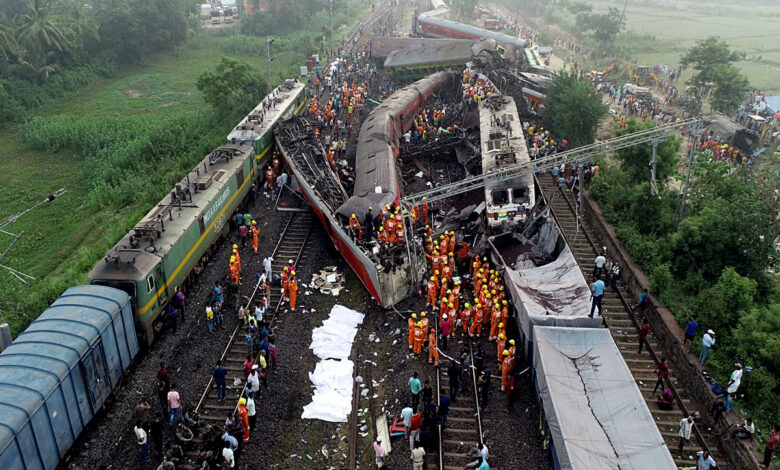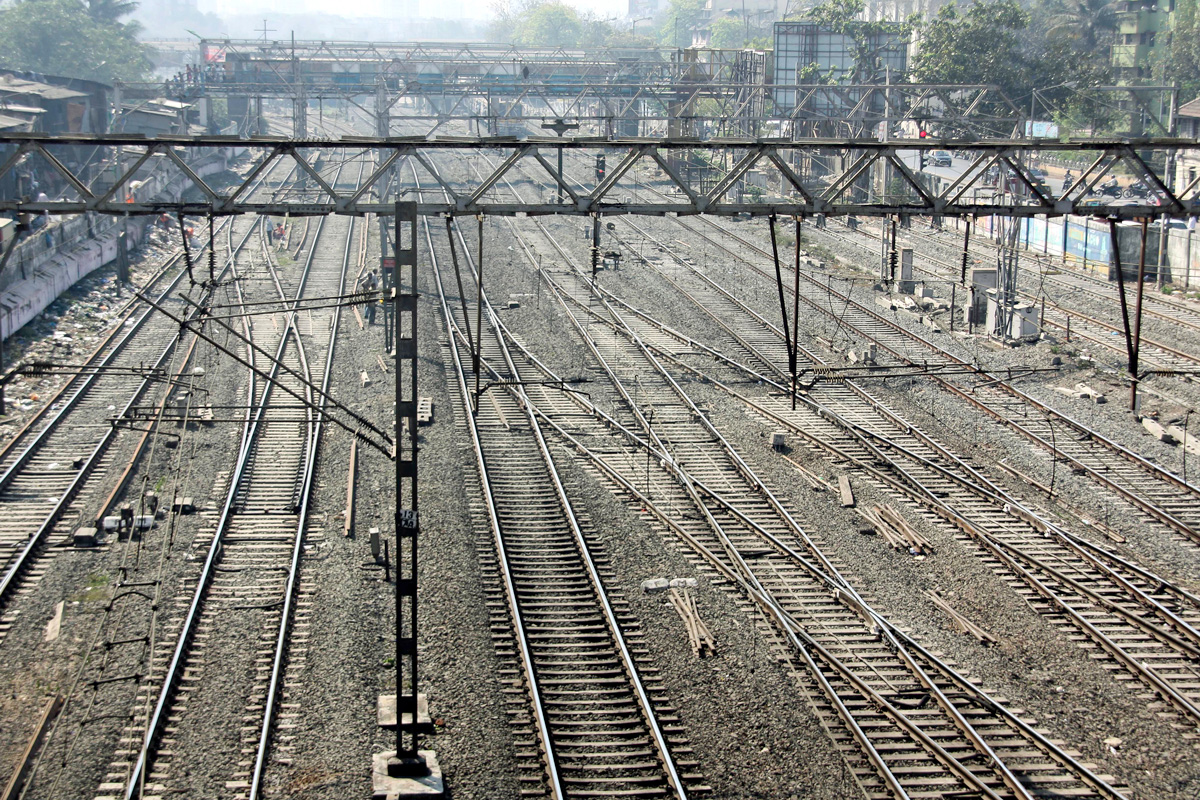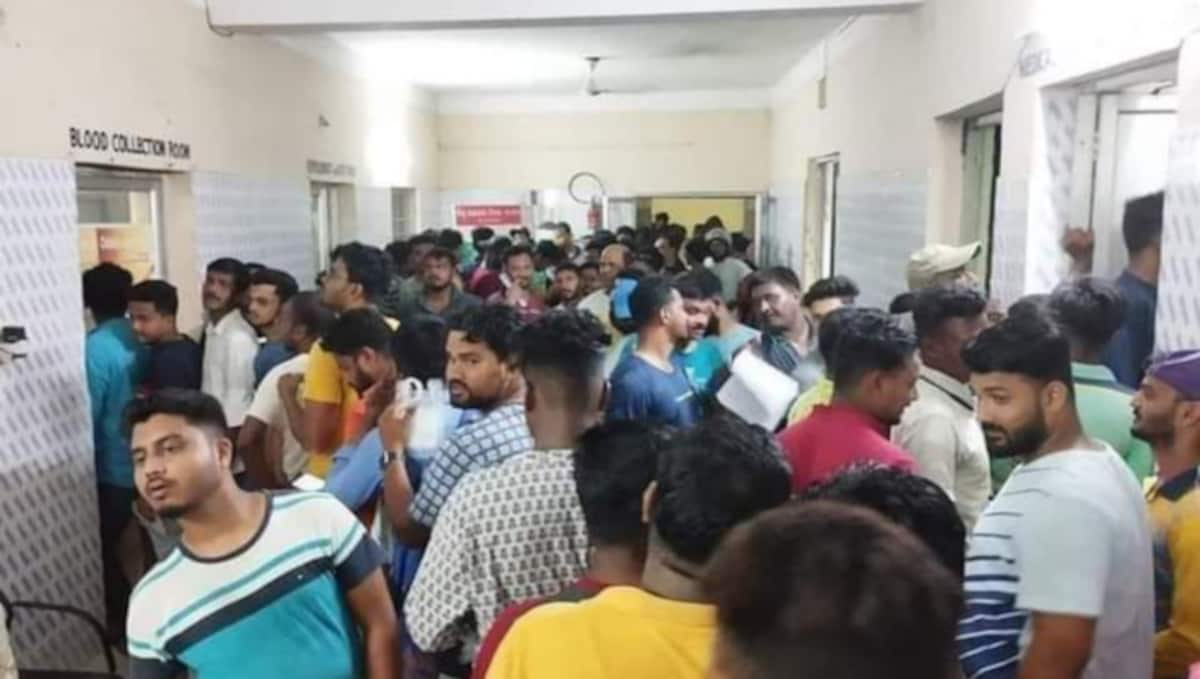Tragic Horrifying Train Accident: Coromandel Express Collision
Coromandel Express Once Again Meets With A Deadly Derailment

The notorious history of the Coromandel Express continues as it derails again, raising questions about rail safety. The Coromandel Express, one of India’s most well-known train services, has experienced yet another derailment, marking the third incident in just two decades. The recent derailment of the Coromandel Express has sparked concerns regarding the safety of passengers and infrastructure on the country’s rail network.
History Of Coromandel Express Derailed Thrice In 20 Years
The Coromandel Express, known for its picturesque route along the eastern coastline of India, has had a history marred by derailments. The first significant derailment of the train took place on 15 March 2002 near Jajpur Road in Odisha, leading to the deaths of more than 50 passengers and injuring hundreds. It was a tragic incident that raised serious concerns about railway safety protocols.

A decade later, in 2013, the Coromandel Express experienced its second derailment near Nellore, also in Andhra Pradesh. Thankfully, there were no fatalities, but many passengers were injured. The incident highlighted the need for improved safety measures and reinforced the ongoing debate surrounding rail infrastructure maintenance and modernization.
With the most recent derailment of Coromandel Express On 7 June 2023, the focus on railway safety has intensified again. Authorities and experts call for a thorough investigation to identify the causes of the recurring accidents and prevent future mishaps. Preliminary findings suggest that a track malfunction may have been the primary cause of the derailment.
Possible Signaling Error Caused Odisha Train Accident:
The horrific crash of three trains is assumed to be caused by a derailment. The Coromandel Express, which was signaled to en route the main line, had taken the loop line wherein the goods train was parked, while the Howrah Express that passed through the central line also suffered derailment and entered the crash scene.
The Indian railway network is built in such a manner that the loop lines are constructed to provide much larger space for trouble-free operations and parking more trains. These loop lines are about 750-800 meters long, which is the total length of a goods train, and hence, these lines can easily harbor these goods trains.

According to the authorities’ initial reports, the goods train parked in a loop line was placed in such a manner that the Coromandel Express could move past without hindrance. Although the Coromandel Express was signaled to move through the main line, the tracks led the course of the train towards the loop line, causing a deadly crash with the parked goods train.
Under the impact of this destructive collision, some bogies of the Coromandel Express derailed and slammed into Howrah Express in the downline. However, this is just an assumption based on the initial reports. An alternative to this accident was also given wherein the officials believed that Coromandel Express may have derailed initially and then crashed into the parked goods trains.
It remains of immense discomfort and anxiety that the so-called officials who were responsible in the first place to have avoided this accident are now making assumptions that could fit into the deadly situation. What is more shocking is the government’s response to this horrific accident that kept repeating in history, and no efforts were made to improve the situation. Situations like this keep the government under great scrutiny, mainly when two prior incidents were recorded for the same train, and the derailment caused all the cases. Then arises the question: What did anti-collision devices do if derailment was the case?
Absence Of Anti-Collision Device Or Ignorance Of Authorities:
The Anti-Collision Device (ACD) is an important safety measure implemented in the Indian railway system, designed to prevent train collisions and enhance the safety of train operations. Developed by the Research Designs and Standards Organisation (RDSO), the anti-collision device works on continuous communication between trains to prevent collisions. Each train equipped with the ACD is fitted with a GPS receiver and a microprocessor-based control unit.
It exchanges information with nearby trains, including their speed, direction, and distance. Calculating the possibility of a collision based on this data, the device issues appropriate warnings and commands to the locomotive driver. In case of potential collisions, the ACD initiates automatic braking, overriding the driver’s control if necessary.

However, all these amenities seem like nothing, just a user-guide manual that seems fancy yet challenging to implement adequately. The anti-collision system was absent in the Odish route, which could have otherwise avoided this deadly accident. Without an ACD, train collisions are higher, especially in densely populated and high-traffic areas. The absence of a device that can detect and prevent potential collisions in real-time leaves trains vulnerable to accidents caused by human error, signal failures, or miscommunication.
Coromandel Express, which was supposed to take the main line, was running at a high speed of 128 mph. While the train was not supposed to halt at the station, the main line was cleared for it to pass through. On the other side, the Howrah Express, at a speed of 116 mph, added to this deadly collision. The reports from the railway authorities clarified that for a driver to stop the train by applying brakes would be calculated from the time and speed of the train. A derailment is possible for goods trains, while such cases for passenger trains are sporadic.
In Adverse Times, Odisha Becomes A Symbol Of Unity And Generosity:
In times of crisis, the unity and resilience of a community often shine brightest. Such was the case in Odisha, a state in India where the people rallied with an unwavering determination to provide assistance and support during emergencies.
When faced with adversity, the people of Odisha demonstrated their remarkable courage and compassion during rescue operations. They worked amidst treacherous conditions and risked their safety to rescue fellow citizens trapped in this hazardous situation. In the aftermath of a crisis, transporting injured individuals to hospitals becomes a critical lifeline. The people of Odisha stood as pillars of support, providing immediate aid and comfort to those in need. Their swift response and organized efforts ensured that those requiring urgent medical attention received it promptly. The solidarity and willingness to extend a helping hand demonstrated by the people of Odisha exemplify the true essence of community.

In emergencies, the need for blood donations becomes even more vital. Odisha rose together as one epitome of generosity and compassion by donating blood to help the injured and save lives. Their invaluable contributions were crucial in replenishing the blood supply, ensuring that hospitals had the necessary resources to treat the injured. The act of donating blood not only demonstrates empathy but also symbolizes a commitment to preserving human life.
Amidst this tragic Coromandel Express collision with two other trains, leaving 280 dead and more than 900 injured, Odisha is leaving an indelible mark on the hearts of many through their selflessness and acts of kindness. During times of crisis, they exemplify the true spirit of unity, compassion, and generosity. Their unwavering support during rescue operations, the transportation of injured individuals, and blood donation showcase the immense capacity of humanity to rise above adversity.
Proofread & Published By Naveenika Chauhan




